Share
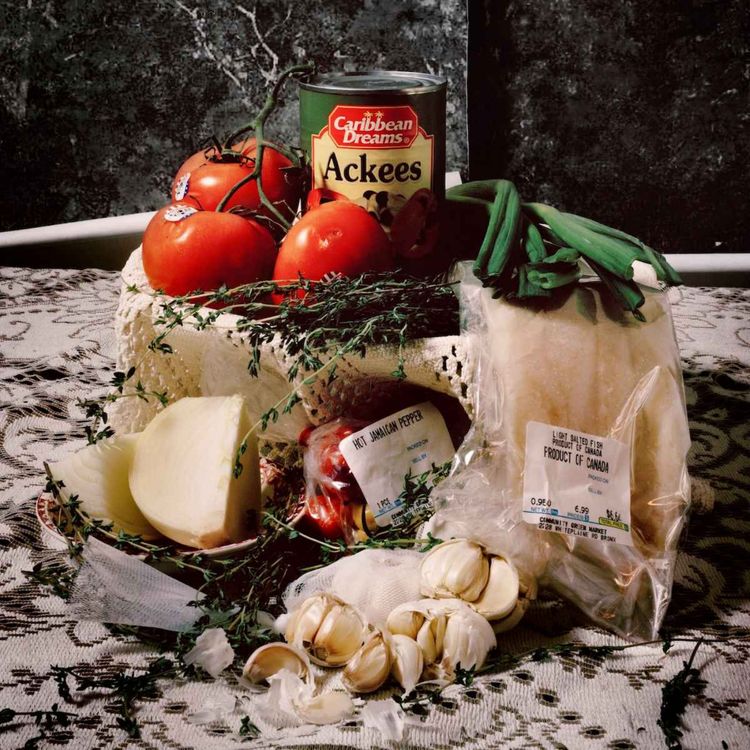
Light Work Podcast
Samantha Box: Caribbean Dreams
Samantha Box’s new body of work, Caribbean Dreams, is a series of complex studio still lifes of personal, familial, and regionally-referenced objects, heirlooms, fruits, vegetables, and plants, onto which she collages family and vernacular images, fruit stickers, packaging, and receipts. A departure from earlier methods and subject matter, the constructed, experimental, and unpredictable compositions of Caribbean Dreams embody Box’s exploration of multiple diasporic Caribbean histories and identities.
Box’s new methods pose an opportunity and dilemma: once you seize the freedom to create an image from scratch, where do you begin? With a new camera, family artifacts, and grocery store produce, she embarked on making tabletop still lifes. She cites seeing a forgotten fruit from her childhood, the soursop, in her local green market as what started her down the path of creating images in the studio. Present in all of Box’s constructions is her desire to see her Caribbean identity and history from as many angles as possible. Each new generation of images both invites and prods the viewer to consider the recurring objects with a fresh perspective.
samanthabox.com
—
Music: "Skip Song" by A. A. Aalto
Intro/Outro Music: Vela Vela by Blue Dot Sessions
Special thanks to Daylight Blue Media
Light Work
More episodes
View all episodes

43. Aaron Turner: The Archive as Liberation
12:13||Season 1, Ep. 43Aaron Turner: The Archive as LiberationMay 12–August 29, 2025Kathleen O. Ellis GalleryReception: Friday, July 25th, 5-7pmThe Archive as Liberation is a publication and exhibition organized by Aaron Turner (Light Work artist–in-residence, 2018, and Light Work exhibiting artist, 2021). Turner has gathered a unique group of artists and writers to engage in dialogue around archival photographic methods. Contributors include Andre Bradley, calista lyon, Raymond Thompson Jr., Harrison D. Walker, and Savannah Wood, alongside writing by Chisato Hughes, Alec Kaus, Andrew Martinez, Aaron Turner, Amelia Wallin, and Wendel A. White, with a foreword by the book’s editor, Donasia Tillery. The publication was designed by Elana Schlenker. Tillery writes, “What if memory is not solely an act of recollection, but of discovery and creation? The Archive as Liberation considers this question from the perspectives of subjects who lack access to traditional modes of documentation—Black and Indigenous cultures creatively preserved despite systemic erasure, landscapes that bore witness to colonial conquests, and the lineages that continue to survive in their wake. These works prompt us to consider not just what we remember but how we remember. In doing so, they work to inspire a more authentic vision of the past and a liberated vision of the future.” To mark the launch of this publication, Light Work has mounted an exhibition highlighting many of the contributing artists. This exhibition includes work by Andre Bradley, Chisato Hughes, Alec Kaus, calista lyon, Raymond Thompson Jr., Harrison D. Walker, Wendel A. White, and Savannah Wood. The exhibition also includes a unique reading room curated by Turner with artists’ books from his personal collection and pieces from Light Work’s collection. The reading room will be in Light Work’s Lab for the duration of the exhibition.Image Credit: Harrison D. Walker, Between Two Worlds, Footnotes, 2025—Aaron Turner is a photographer, educator, and independent curator, born and raised in the Arkansas Delta. Turner holds an MA from Ohio University and an MFA from Mason Gross School of the Arts. In his studio practice, he uses the 4×5 view camera to create still-life studies on identity, history, abstraction, and archives. He has organized the following selected exhibitions and symposiums: And Let It Remain So: Women of the African Diaspora (Phoenix Art Museum, 2022), Time & Empathy: Arkansas Photographer Geleve Grice (University of Arkansas, 2021–22), and Resounding Sovereign Expressions: Resurgent Indigenuity in Ozark Arts Practice & Scholarship (University of Arkansas, 2025). He most recently joined the University of Michigan’s Penny W. Stamps School of Art & Design as an assistant professor.—Special thanks to Daylight Blue Media daylightblue.comLight Work lightwork.org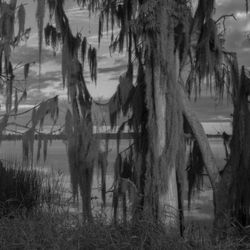
42. Nabil Harb: Mater si, magistra no
06:04||Season 1, Ep. 42Nabil Harb’s project Mater si, magistra no (a macaronic phrase that translates as “Mother yes, teacher no”) presents photographs that describe and depict moments and scenes within his hometown of Lakeland in Polk County, Florida. This Central Florida location is both the backdrop and main character of Harb’s visual narrative: a story that emits surreal qualities which twist ideas of the region through photography’s formal language into a conceptual idea—an idea of how to describe the atmosphere of a place without words. Harb writes, “The landscape is the perfect reflection of our society, our ultimate index—it holds our histories, our secrets, our failures, and our hopes for the future.” Harb uses his camera to look rather than gaze at the wily scenes and moving bodies; his images disturb the before and after of a photograph by showing a moment extended or an instant flashed with a strobe. The project title informs Harb’s reasons and choices around his subject matter with his opinions and beliefs about this landscape, the people who inhabit it and move through it, and his subjecthood. The history of land usage in Central Florida greatly influences where he goes to photograph and how he looks at his surroundings. The narratives in his work are conflicting and intermingle with one another. The overriding story is one of man versus nature, of beauty and destruction coexisting in an atmosphere that is surreal, seductive, and breathtaking. Where the conflicting notions of destruction and rebirth intersect is also the point at which Nabil Harb’s formalism and conceptual photographic practice meet, showing us the potential for beauty in destruction and foreboding rebirth. Image credit: Nabil Harb, Lake Hancock, 2024—Nabil Harb is a Palestinian American photographer born and raised in Polk County, Florida, where he still lives. Harb received his BA in anthropology from the University of South Florida and his MFA in photography from Yale University. His work has been featured in Aperture, The Atlantic, ArtReview, The Guardian, and A24. nabiljharb.com/—Special thanks to Daylight Blue Media daylightblue.comLight Work lightwork.org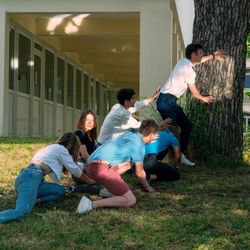
41. Nicholas Muellner: Asea
08:05||Season 1, Ep. 41In this exhibition, Nicholas Muellner offers up photographs depicting people pantomiming in a verdant landscape made complex with surreal lighting; these images are paired with an issue of Contact Sheet that serves as a guidebook to the exhibition. The text in Contact Sheet is wryly poetic and succinct, and loosely leads us from picture to picture. Asea takes us somewhere without making its destination specific, setting a tone and mood that guides our desire for meaning but refuses to precisely locate it.The exhibition conveys a type of suspended drama via an installation that divides the gallery into two rooms, creating an atmosphere in which viewers float, both in space and time. The majority of the portraits are of people connected to the maritime economy and all of the photographs were made in a landscape or setting that the subjects live in: Marseille, Odesa, Milan, Long Beach. The subjects gesture toward the camera, holding the invisible tools of their respective trades, and suggesting an estrangement from their concrete identities.With Asea, Muellner projects a state of limbo and a search for personal meaning within photography’s inevitable narrative limits. We are asked to ponder alone, in a subjective state that is not fixed but which hovers within the parameters established by the photographs and text. Ultimately, we engage with Asea because it is at once thoughtful, beautiful, and curious.—Nicholas Muellner is an artist and writer whose books include Lacuna Park: Essays and Other Adventures in Photography, The Amnesia Pavilions, and In Most Tides an Island, which was shortlisted for the Paris Photo–Aperture PhotoBook Award and named a Best Book of the Year in Artforum. In addition to solo exhibitions in the United States and Europe, his writing has been published by MACK/SPBH, Aperture, Radius, Triple Canopy, Foam, and Routledge, among others. Muellner has performed slide lectures internationally, including at MoMA PS1, Carnegie Museum, The Photographers’ Gallery, and the Museum of Contemporary Photography. His work has been supported by a 2018 Guggenheim Fellowship in Photography, a John Gutmann Fellowship, and residencies at the MacDowell and Yaddo colonies. Muellner received a BA in comparative literature from Yale University and an MFA from Temple University. He is the founding co-director of the Image Text MFA and ITI Press at Cornell University.nicholasmuellner.com—Special thanks to Daylight Blue Media daylightblue.comLight Work lightwork.org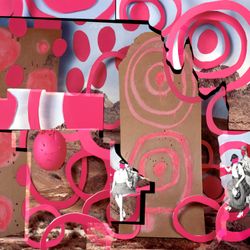
40. According to the Laws of Chance
17:02||Season 1, Ep. 40According to the Laws of Chance: Group ExhibitionMay 31–August 16, 2024Kathleen O. Ellis GalleryReception: Friday, July 26, 5-7pmAccording to the Laws of Chance is a subtitle included in many works by the Dadaist painter Jean Arp that describes his systematic yet chance-driven method of creating his simple and playful paintings. Arp would let torn pieces of paper fall to the floor to determine his painting or collage compositions. Although the outcomes are different, Arp’s ethos can be found in the work of the photographers selected for this group exhibition.The artists in this exhibition—Cheryl Miller, Claire A. Warden, Jaclyn Wright, Josh Thorson, Kyle Tata, Louis Chavez, and Will Stith, and Light Work’s collection artists, Cecil McDonald, Jr., James Welling, Peter Finnemore, and Rita Hammond—are using and defining chance as a core element of their largely divergent practices.Chance is a core tenet of photography. The image-makers in this exhibition embrace the unpredictable and find ways to amplify chance for conceptual and creative purposes. These artists interpret chance via darkroom and analog experimentation, conceptually driven exploration, daily image-making, and studio-based arranging. The results of these methods are surprising expressions of each artist’s voice. Together they showcase the wide-ranging use of chance and highlight it as a vital tool in contemporary photographic practice.Special thanks to Daylight Blue Mediadaylightblue.comLight Worklightwork.orgCover Image by Jaclyn Wright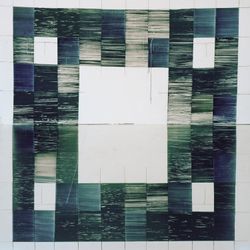
39. Sophia Chia: Character Space
07:05||Season 1, Ep. 39In 1987, Sophia Chai immigrated to New York City from South Korea as a teenager without knowing English. Looking back, she has described that experience as feeling untethered to any internal compass that she could use to navigate her place in a new country with a new language. She visually explains these experiences to us by reinterpreting the Korean language’s characters in photographs that enable us to see the contradictions of visual and verbal communication.Chai uses optics (focal length, perspective, perception, and magnification) to pin down the marks, rubbings, and paintings on her studio walls. The overall effect is a collage of ideas, with an efficient yet complicated economy of picture making with intentional gaps. These gaps can describe the moment right before the sound of a word comes out of the interior space of the mouth.sophiachai.com—Special thanks to Daylight Blue Media daylightblue.comLight Work lightwork.org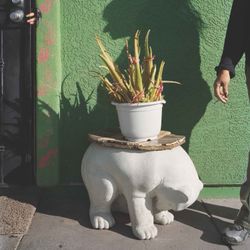
38. Eduardo L Rivera: The Sun Echoed Like A Song
05:02||Season 1, Ep. 38The Sun Echoed Like A Song is an exhibition of photographs made in Eduardo L Rivera’s childhood hometown near the Arizona/Mexico border. Taking inspiration from light and heat, he has been exploring the personal histories of family, community, and environment throughout the last decade.eduardolrivera.com—Special thanks to Daylight Blue Media daylightblue.comLight Work lightwork.org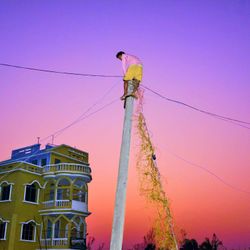
37. Arko Datto: Shunyo Raja (Kings of a Bereft Land)
06:26||Season 1, Ep. 37In Shunyo Raja (Kings of a Bereft Land), Arko Datto’s epic three-part series chronicles the lives of those living in the world’s largest delta, variously known as the Ganga-Brahmaputra-Meghna Delta. Climate change has rapidly put this immense region and its inhabitants in danger. Even as the artist summarizes the complexity and scale of the challenges confronting both, he knows his time with this landscape is fleeting.arkodatto.com—Special thanks to Daylight Blue Mediadaylightblue.comLight Worklightwork.org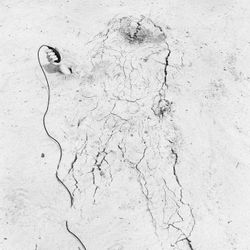
36. Jenny Calivas: Surface Thing
08:18||Season 1, Ep. 36Jenny Calivas' images breathe in photography’s liminal space between intuition and what words can only sometimes convey. Here is a photographer whose practice is consistently curious and rigorous. Her images can unexpectedly taunt us, at once generous and withholding, still and active. In so doing, Calivas wrestles and succeeds with a multitude of ideas—from the spiritual to the feminist to the ecological—and elicits moods that range from the humorous to the existential.jennifercalivas.com—Intro/Outro Music: Vela Vela by Blue Dot SessionsSpecial thanks to Daylight Blue Mediadaylightblue.comLight Worklightwork.org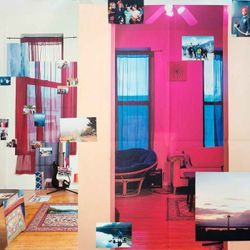
35. Guanyu Xu: Suspended Status
07:15||Season 1, Ep. 35Guanyu Xu’s Suspended Status depicts an artist caught in a web of red tape. The work on view for this exhibition comprises images from his ongoing series, Resident Aliens, as well as a large grid of images that he calls Suspension. Both bodies of work use visa status in the United States as a means of framing images that depict people who are suspended between countries and cultures. Their futures hang on faceless state agencies in a churning political current. Xu's major influences are the production of ideology in American visual culture and a conservative familial upbringing in China. Xu’s practice examines the production of power in photography as well as the fate of personal freedom and its relationship to political regimes. He negotiates these questions from his perspective as a Chinese gay man. He makes use of photography, new media, and installation, and his work across media intentionally reflects aspects of his displaced and fractured identity.xuguanyu.com—Music: "Agree to Disagree" by Zero VIntro/Outro Music: Vela Vela by Blue Dot SessionsSpecial thanks to Daylight Blue Mediadaylightblue.comLight Worklightwork.org